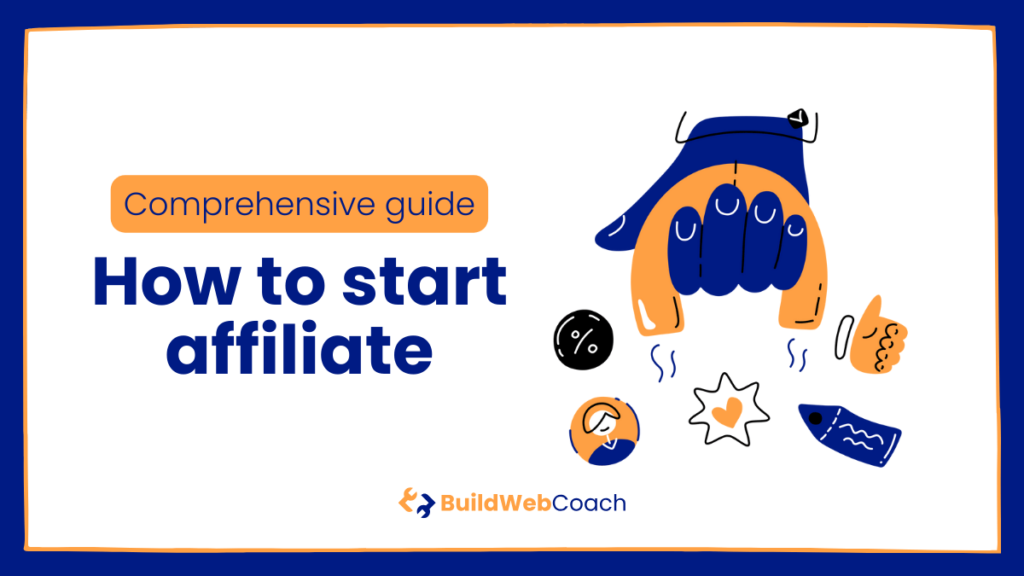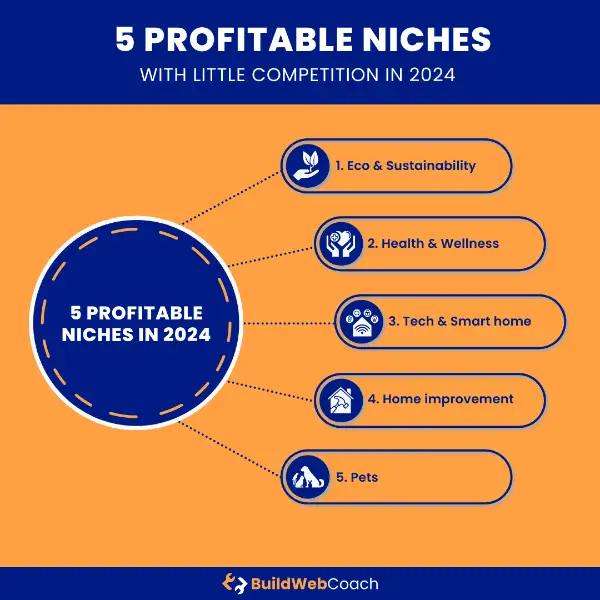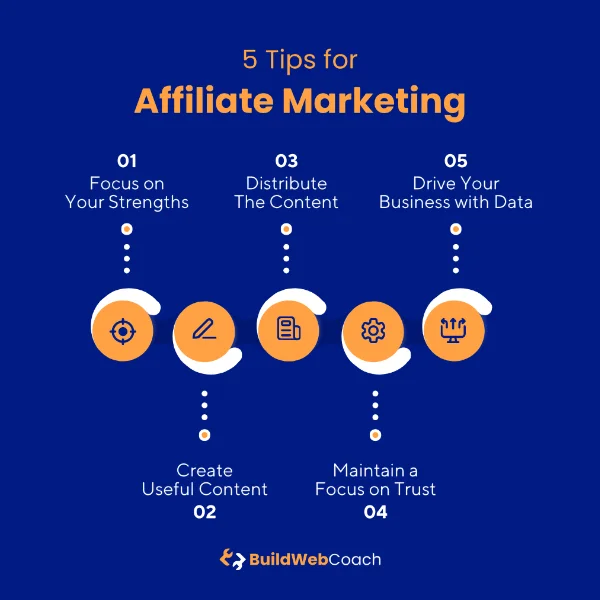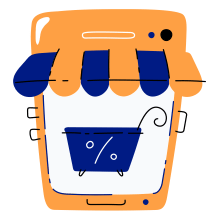Last Updated on February 13, 2024
Affiliate marketing has grown into a multi-billion dollar industry offering lucrative opportunities for content creators and online entrepreneurs searching for ways to make money online.
The value of affiliate marketing is expected to grow to a whopping 15.7 billion dollars in 2024. If you are considering a new career or a side hustle in affiliate marketing, here are a few statistics to get you motivated:
- 11.7% of affiliate marketers make more than 100K/month in revenue
- Affiliate programs are the primary acquisition channel for 40% of US merchants
- 95% of affiliate marketers fail and quit (less competition!)
- The affiliate marketing industry was worth $8.2 billion in 2022 and $14.3 billion in 2023
Affiliate marketing can be profitable for those willing to learn the skills and strategies to connect companies and content creators with potential customers.
However, it requires strategic insight and practical knowledge to thrive in a complex digital landscape. When you set out to become an affiliate marketer, you will need to master a variety of skills, including:
- Pinpointing your niche
- Creating compelling content to build an engaged audience
- Driving traffic effectively
- Navigating the ins and outs of affiliate networks
- Staying on the right side of legalities
- Mastering analytics to gauge success and failures
- Monitoring trends and searching for new market opportunities
How to Start Affiliate in 5 Steps (Summary)
Our comprehensive guide will teach you how to start affiliate marketing through easy steps and successful strategies.

Time:
ca. 10+ hours
Tools Needed:
A computer, tablet or laptop.
Cost:
0 USD
Things Needed:
Especially your time and smile.
5 Steps to Start Affiliate Marketing for Beginners:
Step 1: Choosing a Profitable Niche | Look at step 1
A successful affiliate marketing empire starts with the right niche.
Step 2: Evaluating Profitability and Sustainability | Look at step 2
Assess the profitability and sustainability of the niche.
Step 3: Choosing Affiliate Products to Promote | Look at step 3
Picking affiliate products is all about strategy; you will have more success promoting products that match your brand and give value to your audience.
Step 4: Creating Quality and Consistent Content | Look at step 4
Your content’s quality, whether a YouTube channel or text-based blog, will be the cornerstone of your affiliate marketing empire.
Step 5: Building an Audience and Driving Traffic | Look at step 5
Affiliate marketing is built on web traffic, and there are multiple ways to drive traffic to your affiliate offers.
In this article, you will learn everything you need to build a solid foundation for affiliate marketing that will pave the way to a successful affiliate marketing career.
- How to Start Affiliate in 5 Steps (Summary)
- How Does Affiliate Marketing Work?
- Affiliate Marketing Benefits
- Choosing a Profitable Niche
- Evaluate Profitability and Sustainability
- Choosing Affiliate Products to Promote
- Selecting an Affiliate Program
- Affiliate Content Marketing – Quality and Consistency
- Building an Audience and Driving Traffic
- Compliance and Legal Considerations
- Strategies for Overcoming Affiliate Marketing Obstacles
- How to Stay Motivated in Affiliate Marketing
- Are You Ready to Start an Affiliate Marketing Business?
- Frequently Asked Questions
- Need more inspiration on creating websites?
How Does Affiliate Marketing Work?
Affiliate marketing is straightforward– a company creates the affiliate program, and the affiliate signs up for the right to promote that business and its products. The marketer adds links to product in their content, and they earn a commission when a customer purchases through an affiliate link.
Four main actors are involved in the process, or three if a company has an in-house affiliate management program. Each plays a unique part in the marketing approach:
The Affiliate (or “Publisher”): The individual or entity that promotes the merchant’s product or service.
The Merchant: The individual or entity selling the product or service that the affiliate promotes.
The Affiliate Network: Companies that do not manage affiliates in-house will use an affiliate network, an intermediary between affiliates and the merchant’s affiliate program. While affiliates and merchants can connect without an affiliate network, it is a popular method businesses use.
The Customer: The individual who purchases a product through an affiliate’s link.
The affiliate, also known as a publisher, markets a product in a way that appeals to potential consumers. Affiliates often have a demographic they target, adhering to that audience’s interests and creating a defined niche or personal brand that helps the affiliate attract consumers who are most likely to buy.
Each affiliate receives a unique affiliate link or code from the business, which they share with their audience on social media, email, or a blog post. When a customer completes a purchase using the affiliate link, a unique code lets the merchant know which affiliate has earned the commission.
Many would-be affiliate marketers are attracted by the low entry barrier, with many programs free to sign up and some even offering sign-up bonuses. This business strategy provides a sweet spot of hefty profits with minimal risk, appealing to those aiming to cash in on digital marketing ventures.
While affiliate marketing may be an accessible business model, it takes hard work, persistence, and a dedication to quality to grow it into a profitable enterprise–much like any other type of business.
Affiliate Marketing Benefits
The earnings potential for affiliates is unlimited, which is not something you can say about many businesses. Compared to most other income methods, your start-up costs are almost non-existent. Website hosting costs just a few dollars a month, and if you do everything yourself, the only overhead for your business is your time.
Here are a few more benefits that make affiliate marketing an attractive proposition:
Low Financial Risk for Affiliates: Affiliate marketing typically does not require investments in creating or purchasing products. With little upfront cash, anyone can start an affiliate marketing gig.
Passive Income Potential: Once established, affiliate marketing can become a source of passive income. Even after an active promotion ends, affiliates can still rake in earnings if their content stays fresh and keeps attracting visitors.
Diverse Product Offerings: You have the flexibility to promote a wide range of products and services across various industries.
Access to Training and Education: Many affiliate programs provide resources, training, and support to help affiliates succeed. With these resources, affiliates can fine-tune their marketing strategies and significantly boost their results.
No Product Ownership Required: Affiliates do not need to own the products they promote. Affiliates get to skip the hassle of stocking products and handling customer queries, freeing them to focus on creating content and developing marketing strategies that drive sales.
Global Reach: With the right program, you can sell to a global audience by promoting goods and services to consumers worldwide. A global audience means affiliates can tap into a broader market to ramp up earnings potential significantly.
Performance-Based Compensation: You will typically be compensated based on your performance, such as sales, leads, or clicks generated through your promotional efforts.
Earn Cash Through Your Blog: By weaving affiliate links into content, YouTubers, social media stars, and influencers can boost their blog traffic and income from the traffic they already have. Turn your existing platform into revenue streams without compromising the quality of content you share with your audience.
So, with affiliate marketing, you can cash in on your online presence by hooking up with companies offering products that vibe with your brand—it’s a potentially profitable move for anyone looking to change careers or diversify their income through a digital side hustle.
Choosing a Profitable Niche
A successful affiliate marketing empire starts with the right niche. Use these tips to hone in on a niche you can be comfortable promoting and know will be profitable for the long term.

What are Your Interests and Passions?
Creating content is hard work, and it quickly becomes a tedious chore if you have no interest in the topics. Choosing a niche you are passionate about or are interested in can help keep you motivated.
Churning out high-quality content day after day is much easier when you enjoy the subject and know what you are talking about.
As an expert in your niche, you can make recommendations based on your experience, which will help establish you as a reliable source and give you an edge over your competitors.
Analyze Market Demand and Competition
Assess the market for the affiliate products you intend to promote. Picking a niche in hot demand yet not swarming with competitors will help get you off to a flying start.
Aim for products with low competition but an audience highly interested in the products. By zeroing in on a niche that has slipped under the radar of the big players, you set yourself up for a slice of profit without going head-to-head with established giants.
Consider Evergreen Niches
An evergreen niche remains relevant over time. Picking industries like personal finance or fashion is wise because these topics will never lose their popularity. Seasonal niches can work, but you’ll need to ensure you can make enough to carry you through the periods when demand is low.
Niche Down for Specialization
Niching down within a broader niche can help you become a specialist, leading to less competition and more trust from your audience. Digging deep into a niche sets you apart as an expert and catches Google’s attention, significantly boosting your SEO game.
Evaluate Profitability and Sustainability
Assess the profitability and sustainability of the niche. Scout out niches ripe for profit, but don’t forget to check if they have the stamina to bring steady cash down the line. Striking the right balance between how competitive a market is and what your audience loves can make or break your profit margins.
Choosing Affiliate Products to Promote
Picking affiliate products is all about strategy; you will have more success promoting products that match your brand’s vibe and provide value to your audience.
Weigh these factors carefully to give your marketing efforts the best shot at success:
Product Quality and Reputation: Choose products from reputable brands that align with your audience’s interests and have a good reputation. Research your favorite brands to see if they have affiliate programs you can join.
When you back products with a solid reputation, your trustworthiness gets a boost, which will nudge people closer to hitting that buy button. Credibility becomes even more apparent when your audience understands that you are a fan of the brand and use the products you promote.
Customer Support and Reliability: Opt for affiliate programs or networks with reliable customer support. Promoting products with solid support can boost customer satisfaction and reputation.
Earnings Potential and Conversion Rates: Assess the earnings potential of the affiliate products by considering the commission rates, cookie duration, and conversion rates. You will increase earnings by promoting products with generous commissions and affiliate cookies that stick around for a while (more on cookies below) on products people want to buy.
Alignment with Your Brand and Audience: All products you promote should align with your brand image and the needs of your audience. Products that resonate with your brand are more likely to convert based on your audience’s preferences and purchasing behavior.
Selecting an Affiliate Program
While plenty of businesses manage affiliate sales in-house, more and more are handing over the reins to affiliate marketing networks. With more affiliate networks entering the industry, finding one that delivers a quality service can be challenging. The following tips should make your search easier.
Customer Support: When stuff happens, you want an affiliate network with a reliable support structure that can help you get back to earning as quickly as possible.
Range of Products: Some networks, like the popular affiliate sites ShareASale, Impact, or Commission Junction, manage affiliate programs encompassing millions of products and services, while many specialize in just a few niches. Work with networks that have the products to suit your audience.
Earnings Per Click (EPC): Knowing how much you can earn from each click will help you develop campaigns that have the most promise for profit.
Cookie Duration: This metric refers to a cookie’s expiry time. For example, if a cookie duration is 24 hours, there’s a 24-hour timer applied to that cookie. Should the visitor not purchase immediately, they still have 24 hours to return to the site and make good on the purchase before the affiliate misses out on the commission. Cookie durations can last a few hours to many months, so the longer they are, the better your chance of earning.
Commission Rate: A high-paying affiliate program offering decent commission rates increases your earnings potential (earning 4% of a sale is better than earning 1%, but not always).
Conversion Rate: While high commission rates are excellent, they won’t amount to much if the conversion rate is low. Sometimes, promoting high-converting products at a 3% commission is better for your bank balance than a 6% commission on a product that fails to generate sales.
Product Quality: Only recommend good-quality products that provide value and align with your audience’s needs and wants.
While you are new, you may have to accept the standard affiliate terms and rates. However, as you grow and prove you can deliver results, most affiliate programs will happily negotiate better terms to keep you on board.
Affiliate Content Marketing – Quality and Consistency
Your content’s quality, whether a YouTube channel or text-based blog, will be the cornerstone of your affiliate marketing empire. Without great content, you won’t attract an audience, and your ability to appear in search results will suffer. Valuable information delivered with clear and honest communication also builds trust with your audience.
Affiliate marketers thrive by creating content that stands out to their audience and drives them to action.
Crafting top-notch content draws in not only those who already follow you but also piques the interest of potential new visitors. This can boost your website’s search engine rankings and increase the odds of gaining traffic naturally.
Types of Content
Mix up your affiliate marketing content with various styles to ensure all your bases are covered.
Reviews: In-depth, honest assessments of specific products or services, providing insights and recommendations to help your audience make informed purchasing decisions.
Tutorials: Step-by-step guides and how-to tutorials related to your niche, educating your audience while warming them up to make a purchase.
Comparison Articles: Comparing two similar products or exploring their advantages and disadvantages to assist the audience in making buying decisions.
Resource Pages: Curated lists of tools and resources to solve the audience’s problems, establishing your authority as an expert in the niche.
Best Practices for Affiliate Marketing Content
While you shouldn’t be afraid to bend or break the rules in content creation to keep things interesting, there are some best practices to keep in mind as you create and write:
Originality and Informativeness: Aim to produce original, informative pieces that address the audience’s interests and questions. Always aim to add value for your readers; don’t just promote yourself.
Keyword Targeting: Target specific, long-tail keywords to improve your content’s ranking. Utilize keyword research tools like Semrush or Google Keyword Planner to identify relevant keywords.
Balanced Content Mix: Create a mix of content types, including informational articles, product reviews, tutorials, and comparison articles, to serve your audience best and demonstrate authority in your niche.
Transparency and Compliance: Include an affiliate disclosure to comply with legal requirements and ensure transparency with your audience.
Identify Pain Points: The best affiliate marketers understand their audience’s pain points and write in a way that addresses or solves these issues. For example, your reader has sensitive skin and is searching for suitable skincare products, or a new mum is looking for a stroller she can use to jog with her newborn.
Differentiate Yourself: You can stand out from your competition by creating how-to videos of you using a product, doing live tests, or providing an expert analysis or review.
Connect Emotionally: While many people don’t like to admit it, we all make purchases based on emotions. Sharing successes, personal experiences, and anecdotes can help you connect more deeply with your audience.
Always add a CTA (Call to Action): Every piece of published content should include a clear CTA. Even if the piece is informational, you should always guide your reader into performing other actions on your site. Whether signing up for your newsletter or sending the visitor to the sales page, the extra engagement will do wonders for SEO.
Publish Regularly and Consistently: To stay ahead in the affiliate marketing business, ensure your content is always up-to-date and engaging. Regularly hitting your publishing schedule keeps your audience locked in and establishes you as a trusted authority, driving more traffic to your affiliate links.
Building an Audience and Driving Traffic
Affiliate marketing is built on web traffic. While click-through and conversion rates are critical metrics, all equations will equal zero without traffic. Fortunately, there are multiple ways to drive traffic to your affiliate offers.
Search Engine Optimization (SEO)
SEO is the most lucrative method for driving traffic because once your pages start appearing for search terms, they will continue to do so with relatively little work. If your goal is to create a passive income (or as passive as you can get with affiliate marketing), SEO should be your priority.
SEO will be your most significant traffic source once your affiliate empire is well-established and generating income. Organic search results account for 53% of organic traffic versus 15% from trackable paid advertisements. [source]
Social Media Marketing
Social media marketing is all about connecting with your audience wherever they prefer to hang out online, starting conversations, and posting content that’s as shareable as it is engaging.
When you harness the power of platforms like Facebook, Instagram, X (formerly Twitter), Facebook, and TikTok, you can drive a steady stream of traffic back to your website to boost your affiliate income. People spend over 150 minutes daily on social media, so crafting content that clicks with your audience is key to earning their trust and funneling traffic your way.
Email Marketing
Building an email list and implementing email marketing campaigns can nurture and engage your audience, driving them back to your website and affiliate offers. With email blasts, you can smoothly guide your subscribers through exclusive deals and deliver the latest information while gently guiding them toward a sale.
Paid Advertising
While organic traffic sources appeal due to their cost-effectiveness, paid advertising can provide faster results. When you pump money into pay-per-click ads, you can quickly get your site in front of the right people.
But remember, while PPC ads can boost your site’s traffic, you’ve got to keep a watchful eye on your spending; advertising costs can quickly chip away at your profits if you’re not tweaking and improving them regularly.
Compliance and Legal Considerations
Affiliate marketers must adhere to various compliance and legal requirements to ensure transparency and ethical practices in their promotional activities. Navigating the maze of affiliate disclosure rules is critical, as you need to play by FTC standards to keep things above board.
Being upfront about affiliate links is critical—it’s all about keeping things clear and showing your audience that there’s a money trail from the products you’re recommending. The Federal Trade Commission (FTC) mandates that affiliate marketers disclose their financial relationship with the brands or products they promote. To make informed choices, people must know if endorsements come from someone paid to promote a product.
Staying on the right side of FTC rules isn’t just a good idea; it’s non-negotiable for affiliate marketers. Hefty fines are waiting for affiliates who don’t follow the rules. Full transparency includes disclosing when a link is an affiliate link and informing the audience that you will receive compensation for any purchases made through the link.
Getting the hang of what you can and can’t do with affiliate disclosures means you’re more transparent, which keeps your trust game strong with your audience and you on the right side of the law.
Strategies for Overcoming Affiliate Marketing Obstacles
Niche Differentiation: Identifying and targeting specific, less competitive niches can help overcome intense competition and establish a unique position in the market.
Focus on Quality Content: Prioritizing the creation of valuable, original content and leveraging various content types, such as product reviews, comparisons, and tutorials, can enhance engagement and drive conversions.
Compliance Adherence: Understanding and strictly adhering to FTC guidelines and affiliate disclosure requirements is essential for maintaining trust and credibility with the audience.
Diversify Traffic Sources: Implementing a multi-channel approach to drive traffic, including social media, SEO, and email marketing, can mitigate the challenge of traffic generation so you are not relying on just one traffic source.
Continuous Testing and Optimization: A/B testing, tracking affiliate metrics, and refining strategies based on data-driven insights can help overcome conversion optimization challenges and improve overall performance.
How to Stay Motivated in Affiliate Marketing
Like most businesses, affiliate marketers can succumb to the daily grind that eats away at their motivation. Here are some easy ways to keep your motivation levels high for churning out great content.
Set Realistic Goals: Establish achievable short-term and long-term goals to maintain motivation and track progress in your affiliate marketing journey.
Continuous Learning: Stay updated with industry trends, best practices, and new marketing techniques to remain motivated and adapt to changes in the affiliate marketing landscape.
Community Engagement: Join affiliate marketing communities, forums, and networks to connect with like-minded individuals, seek support, and share experiences.
Celebrate Small Wins: Acknowledge and celebrate small victories and milestones, such as reaching traffic or conversion targets, to stay motivated and maintain a positive mindset.
Persistence and Resilience: Embrace setbacks as learning opportunities, stay persistent, and maintain a resilient attitude in facing challenges and obstacles.

Are You Ready to Start an Affiliate Marketing Business?
Creating a passive income by promoting affiliate products won’t be easy, but the results can be exceptional if you put in the effort. No other business can offer such incredible rewards without a significant outlay or investment.
By using the above steps, you can be well on your way to making your first affiliate sale and taking your first steps to financial independence that others can only dream of.
Join us to discover how to build affiliate websites, choose profitable niches, and rank your content for more affiliate marketing success.
Frequently Asked Questions
Need more inspiration on creating websites?
Unlock the power of web building mastery with our top-notch guides.

How to make a website
Learn how to make a website from scratch as a beginner using a website builder.

How to start a blog
Learn how to start a blog and turn it into a money-making venture with our comprehensive guide.

How to start an online store (e-commerce)
Learn how to start an online store through easy steps and successful strategies.

How to make an online portfolio
Learn how to make an online portfolio with the best templates and showcase your creative work.

How to SEO your site
Learn how to optimize your website for search engines and improve your ranking.

How to start affiliate
Learn how to start affiliate marketing through easy steps and successful strategies.
